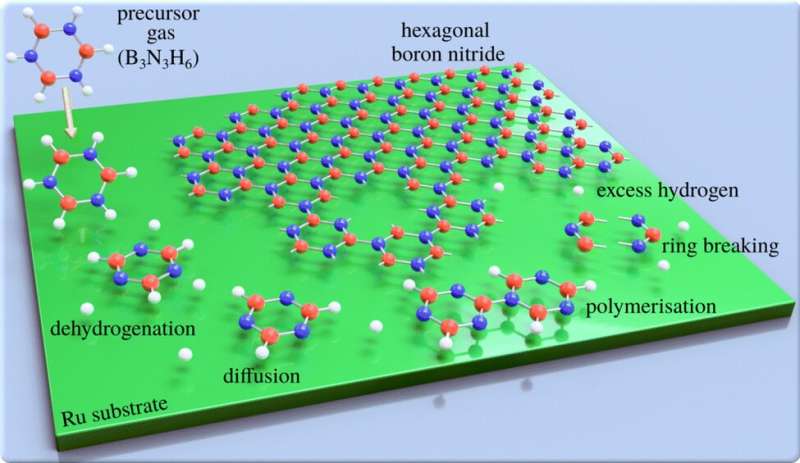Phys.org October 10, 2022
Ultra-thin 2D materials are frequently grown by exposing a hot metal surface to a specific gas, which results in the gas decomposing on the metal and forming the desired 2D material. Due to the hot temperatures involved, it is difficult to monitor the growth of 2D materials during the several intermediate steps involved before the 2D material is completed. An international team of researchers (Austria, UK) utilized helium atom scattering to discover and control the growth of novel 2D h-BN nanoporous phases during the CVD process. They found that prior to the formation of h-BN from the gas-phase precursor, a metastable structure was formed, and that excess deposition on the resulting 2D h-BN leads to the emergence of a (3 × 4) structure. They illustrated that these nanoporous structures were produced by partial dehydrogenation and polymerization of the borazine precursor upon adsorption. According to the researchers the discovery of new “phases” of two-dimensional material could be used to develop the next generation of fuel-cells devices and other applications such as sensor materials, nanoreactors, and membranes…read more. Open Access TECHNICAL ARTICLE

Schematic illustrating the epitaxial growth of h-BN by chemical vapor deposition…Credit: Nanoscale Horiz., 2022, Advance Article